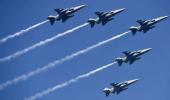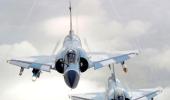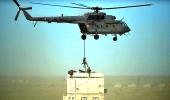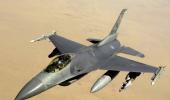IAF officers say they are keen to serve justice quickly and make an example of those found guilty of operational lapses.
Ajai Shukla reports.
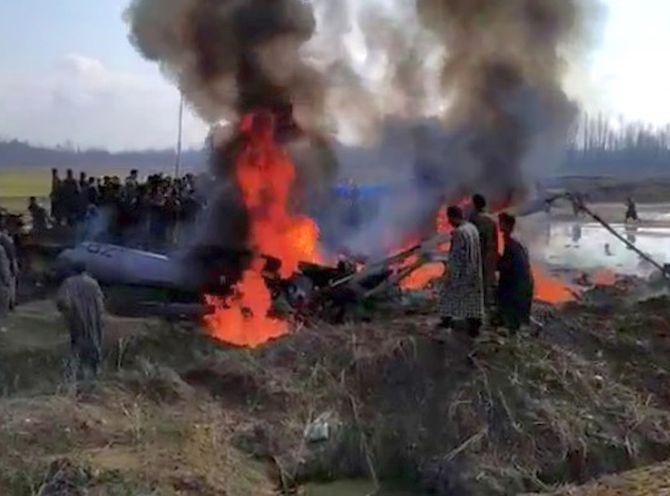
The Indian Air Force has been told to keep on hold the findings of a court of inquiry that has conclusively determined that an IAF Mi-17V5 helicopter was shot down by an Indian missile battery that was guarding the Srinagar air base.
A senior helicopter pilot, of the rank of air commodore, heads the CoI.
Six IAF personnel and a civilian on the ground died in that 'friendly fire' incident on February 27.
Top IAF sources say the incident occurred after officers from the ground missile battery misidentified the IAF chopper as a Pakistani aircraft on a mission to attack Srinagar.
The disaster took place the day after IAF fighters had struck a Jaish-e-Mohammad terrorist camp in Pakistan to retaliate against a JeM suicide bomb attack 12 days earlier, which killed over 40 Indian troopers in Pulwama, near Srinagar.
The CoI has found that, with IAF and army units across Jammu and Kashmir in a state of hair-trigger alert against expected Pakistani retaliation, two crucial omissions led to the missile battery opening fire and downing their own helicopter.
First, to guard against misidentification of aircraft in the prevailing state of alert, all IAF aircraft coming in to land in Srinagar were required to approach the air base only through a designated air corridor.
Ground missile units would know that the aircraft approaching through the narrow 'funnel' was a friendly aircraft.
For reasons that remain unclear, the Mi-17V5 helicopter was not in the safe corridor as it approached from the direction of Budgam, to the south of Srinagar.
The ground missile units assumed the radar track they picked was that of a hostile aircraft.
Second, IAF aircraft are equipped with an electronic device called an Identification Friend or Foe system, which beams out a coded signal that identifies the aircraft as a friendly one to all IAF radars and IFF receivers.
The IFF system is required to be switched on, especially in a situation where ground missile units are on high alert.
For unclear reasons, the CoI has found that the ill-fated helicopter's IFF system was not switched on that day.
IAF officers say they are keen to serve justice quickly and make an example of those found guilty of operational lapses. However, they are held back by a 'go-slow' order.
On February 27, the downing of the helicopter was obscured by the media attention on the downing of an IAF MiG-21 Bison fighter and Wing Commander Abhinandan Varthaman's capture.
The IAF has declined to comment, stating: 'The CoI is still in progress.'
Asked specifically about the delay in finalising the findings of the CoI, the IAF said: 'The time line of any CoI cannot be predicted.'
It is learnt that the missile that was fired was an Israeli short-range surface to air missile (SR-SAM), which can engage incoming targets at ranges out to 20 kilometres.
While engaging targets at those ranges, there is no scope for visual identification. Aircraft are merely a blip on a radar.
The incoming helicopter was engaged with the permission of the base air defence officer at Srinagar, who was required to satisfy himself that a target being engaged is indeed hostile.
